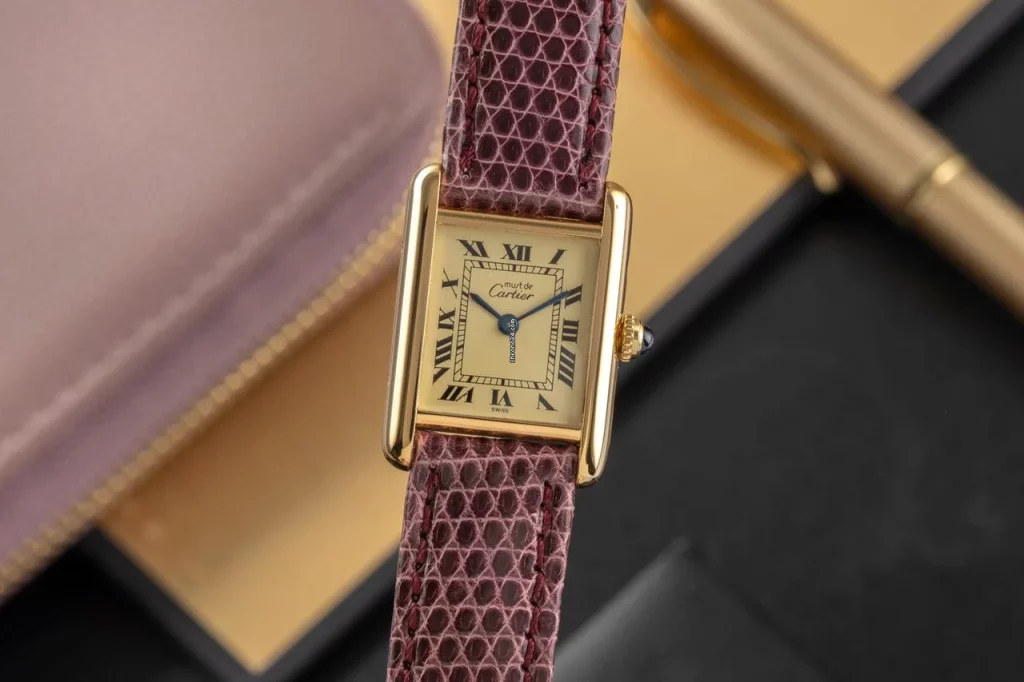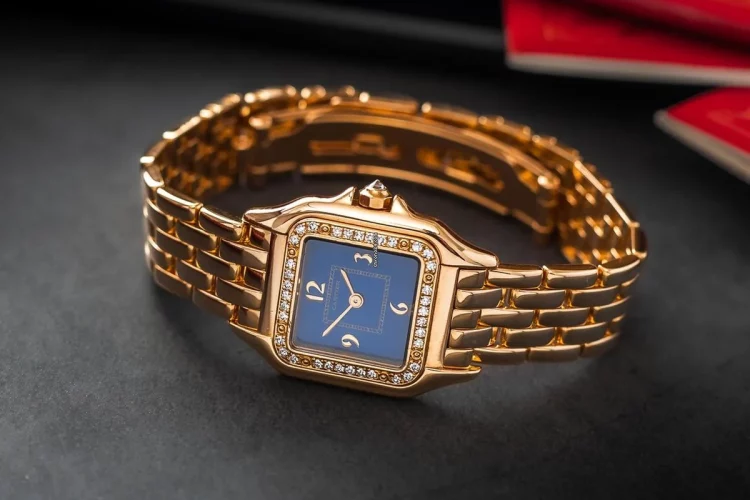When most people think of the origins of the modern dive watch, images of mid-century military tool watches and bulky rotating bezels come to mind. Names like Rolex Submariner, Blancpain Fifty Fathoms, and Omega Seamaster dominate the collective imagination. But few realize that one of the most iconic silhouettes in watchmaking—the Cartier Tank, originally designed for women in the 1920s—had a surprisingly deep influence on the evolution of waterproof watch architecture. Even fewer know that some of the earliest waterproofing innovations came not from marine chronometers, but from art deco dress watches built for style, elegance, and discretion.
In the horological timeline, this link between a fashion-oriented, square-cased women’s dress watch and the highly technical world of diving instruments may seem improbable. But a closer look at early patents, construction techniques, and cultural design shifts tells a more nuanced story—one where the DNA of modern dive watches owes far more to these early 20th-century experiments than history books usually admit.
The Unexpected Connection Between Cartier Tank and the Submariner
The Cartier Tank, introduced in 1917 and popularized in the roaring twenties, was not designed with underwater usage in mind. It was elegant, angular, and dressy—everything a modern dive watch is not. But it pioneered a number of case construction principles that would later prove invaluable to waterproof sports watches.
First, the Tank was among the earliest designs to integrate the lugs into the case shape in a way that created structural rigidity. Instead of attaching strap lugs to a round case, the rectangular Tank used solid metal “brancards” that added strength to the overall profile and helped compress the internal components into a tighter, more dust-resistant space. This wasn’t marketed as a waterproofing feature, but it incidentally enhanced case sealing potential.
Second, Cartier’s early Tank models, especially the later Tank Cintrée and Tank Étanche variants, experimented with case-backing methods that would later be mirrored in dive watch designs. The Étanche (literally meaning “watertight”) was released in the 1930s and is often forgotten in mainstream watch history. This obscure model used a hermetically sealed caseback system long before Rolex standardized its Oyster design. In fact, some historians suggest that Cartier’s suppliers were already developing press-fit and gasket-based sealing methods that paralleled or predated those used by later sport watch makers.
This notion that a watch designed for elite Parisian women in the 1920s laid the groundwork for masculine, technical dive watches decades later isn’t as absurd as it sounds. In many ways, both served a cultural function: They had to be resilient, wearable daily, and discreetly secure in hostile environments—be that a saltwater trench or a crowded dance floor.
Forgotten Waterproofing Patents from the Art Deco Era
The 1920s and 1930s were not just a creative era in terms of visual design—they were also a hotbed of technical innovation. As wristwatches replaced pocket watches, brands scrambled to protect these smaller, more vulnerable devices from dust, moisture, and accidental shock. Waterproofing was not yet about scuba diving; it was about surviving rain, sweat, and the occasional submersion.
One of the first notable patents to emerge from this era came from Hans Wilsdorf’s Rolex in 1926—the famous Oyster case. But Rolex wasn’t alone. Companies like Omega, Longines, and even Cartier were quietly experimenting with various sealing systems, including cork gaskets, double-caseback constructions, and screw-down crown systems. Cartier’s Étanche, for example, was granted a lesser-known French patent for its use of a double-bezel design that helped press the crystal and caseback against a rubber seal when pressure was applied from the strap.
Another innovation that emerged in the 1930s was the idea of multi-component casing. While modern dive watches use multi-piece cases with compression rings or mid-case gaskets, early art deco watches occasionally used similar layering—not to withstand deep-sea pressure, but to keep out perfume, humidity, or household moisture. These needs mirrored the basic environmental pressures later faced by divers.
Interestingly, a few of these patents—filed by French or Swiss maisons—were later cited as prior art in mid-century dive watch patent lawsuits. Though not widely acknowledged, these records suggest a technical lineage that runs from haute horlogerie dress watches to military-issued underwater instruments.
Some historians even speculate that the transition of women’s wristwatch waterproofing tech to men’s tool watches mirrored broader postwar shifts: as women’s horology turned to jewelry and fashion in the 1940s, men’s watchmaking absorbed the technical advances of earlier decades and adapted them for military and sporting needs.
Modern Brands Reviving This Heritage in 2025 Collections

Fast-forward to 2025, and the influence of early 20th-century watch design is more visible than ever in both dress and dive watches. Some of today’s leading luxury and independent brands are explicitly drawing on this forgotten chapter of horological history to redefine how waterproofing and style intersect.
Cartier: Always a master of storytelling, Cartier has leaned into its archive to reintroduce limited runs of the Tank Étanche and the Cintrée, this time with modern screw-down crowns, sapphire gaskets, and 30-50 meters of water resistance. While not dive watches per se, these reissues are marketed as “daily-wear resistant”—a phrase that subtly nods to their hidden robustness.
Tudor and Longines: Both brands have launched square-cased, vintage-inspired dive watches that nod to early water-resistant dress models. Tudor’s “Pelagos Square” prototype, unveiled at Watches & Wonders 2025, combines a retro profile with a modern titanium shell and 300m water resistance. It’s an homage not only to the Submariner but also to the overlooked architecture of the 1920s.
Hermès and Chanel: Women’s luxury brands are also reviving the ethos of the Tank with waterproof fashion watches that blend heritage lines with tool-watch specs. Hermès’ “H2O Arceau” model uses an integrated case-lug system that echoes the Tank’s structural solidity, complete with a 100m rating.
Independent Makers: Niche brands like Baltic, Furlan Marri, and Massena LAB have released square or rectangular watches that mimic 1920s styling while quietly incorporating screw-down crowns and pressure-tested casebacks. These models speak directly to collectors who want vintage elegance with modern dependability.
More broadly, there’s a growing awareness among collectors and designers that technical robustness and stylistic refinement aren’t mutually exclusive. The future of waterproof design may well take more from Art Deco fashion than from the militarized mid-century tool watch aesthetic.
Conclusion
The idea that a 1920s women’s dress watch helped shape the rugged world of modern dive watches may sound counterintuitive, but history—when closely examined—says otherwise. Through design cues, construction methods, and forgotten waterproofing patents, early art deco watches like the Cartier Tank and its Étanche variant laid conceptual and technical groundwork that would later be adopted and evolved by the dive watch genre.
In 2025, as brands revive historical lines with an eye toward both style and durability, we are witnessing a full-circle moment. The elegance once reserved for cocktail parties is being reengineered to withstand oceans, proving that horological heritage often flows in unexpected currents.





































